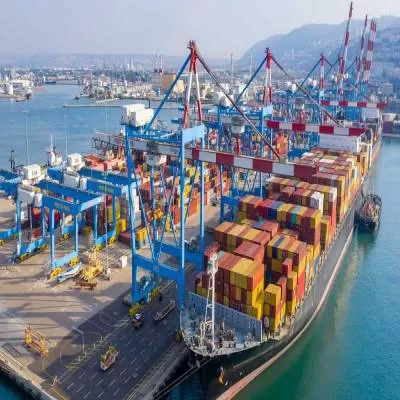Know how blended cement makes a concrete structure durable and fly-ash improves its strength

Blended cement makes sense economically, environmentally and functionally. Greater awareness of these benefits could pave the way for more blending.
<p></p>
<p>ACC is India's first cement company to be awarded the GreenPro certification by the Confederation of Indian Industries for all its eco-friendly, blended cement products.</p>
<p>Blending implies adding industrial waste products such as fly-ash and silica fume to cement. While growing awareness of the need for sustainable construction, stringent environment regulations and cost compulsions were the earlier drivers of blended cement, now, users should be driven by the possibility of achieving better construction outcomes through blended cement.</p>
<p>"Possibly the biggest misconception about fly-ash is that it is a waste material rather than a value-added material," says <span style="font-weight: bold;">N Kalidas, Director, Institute for Solid Waste Research & Ecological Balance (INSWAREB). </span>"Studies on the chemistry of fly-ash-cement reactions show that adding 50 per cent of fly-ash to the cement mix can achieve similar compressive strength as that of pure Ordinary Portland Cement (OPC) by the 28th day and a higher strength beyond day 56. By using admixtures and controlling the water/cement material ratio, fly-ash blended concrete surpasses the strengths of OPC-concrete from the third day onwards."</p>
<p>"Blended cement enhances the durability of the concrete structure through the reaction of pozzolanic material with free lime generated during hydration, enhancing the impermeability of the cement paste," explains <span style="font-weight: bold;">Anil Kumar Pillai, Senior Deputy General Manager, Technical Services, The Ramco Cements.</span> </p>
<p>Fly-ash is a value-add cementitious material. Essentially, it is a material that triggers secondary mineralogy, which improves the durability and strength of concrete, explains Kalidas, who believes it is possible to achieve concrete strength of 50 MPa by supplementing 20-30 per cent of cement with fly-ash. In self-compacting concrete, similar strengths can be achieved even by supplementing 70 per cent of the cement with selective fly-ash.</p>
<p>For these reasons, the "Bureau of Indian Standards (BIS) recommends blended cement for concrete structures in coastal areas or those that will be subject to chemical or chloride and sulphate attack," observes Pillai.</p>
<p><span style="font-weight: bold;">- CHARU BAHRI</span></p>
<p><span style="font-weight: bold; font-style: italic;">To share your views on the market for Cement and Concrete in India, write in at feedback@ConstructionWorld.in</span></p>
<p></p>











